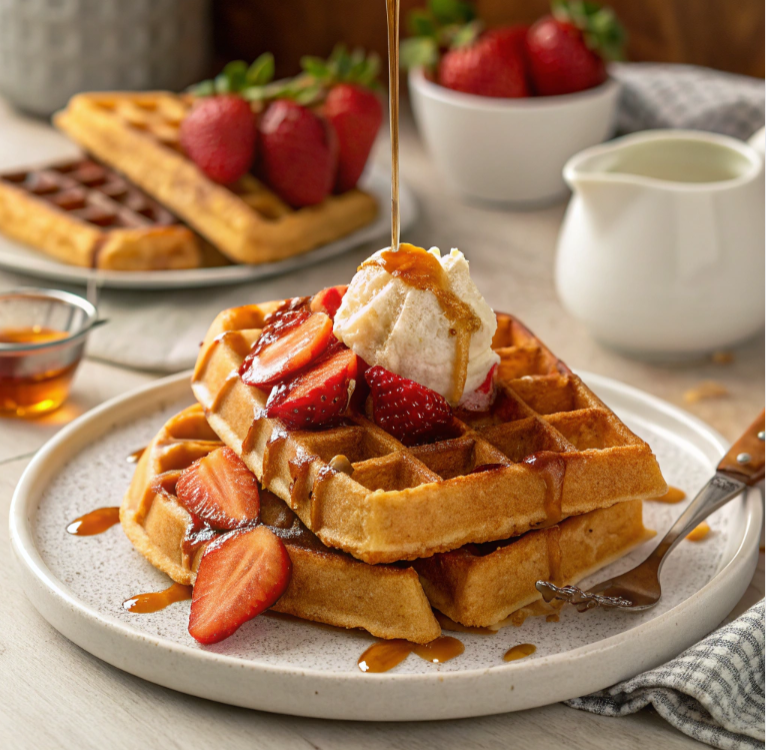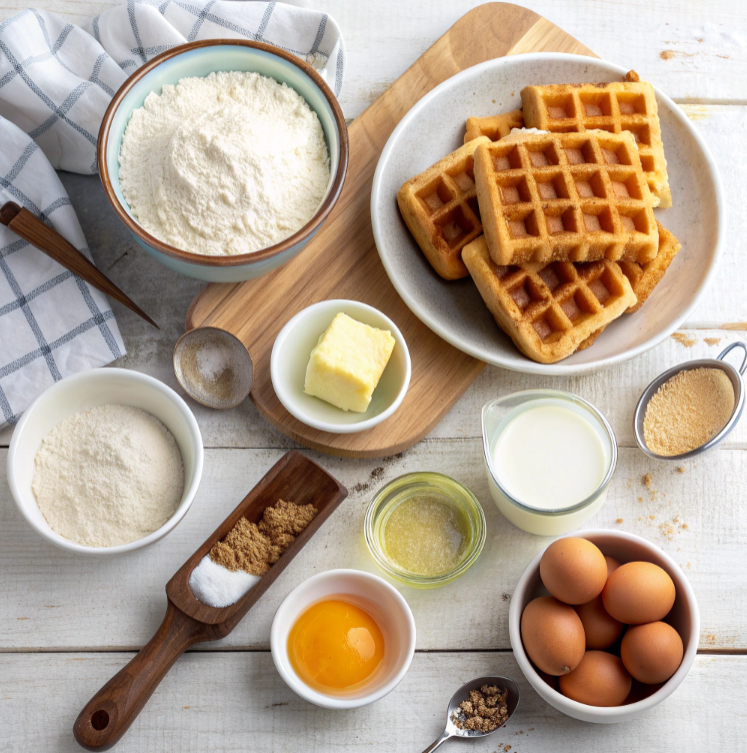The origins of Belgian Waffles can be traced back to medieval Europe, where waffle-making began as a rustic art form. In those times, iron plates engraved with intricate patterns were heated over open flames to produce what were then considered an early version of waffles. Over centuries, recipes evolved, and waffles became a beloved staple across Europe. However, the modern-day Belgian Waffles we know today gained global recognition at the 1964 New York World’s Fair, where Maurice Vermersch and his family showcased their unique creation. The light, airy texture and deep pockets designed to hold an array of toppings made them an instant favorite. Throughout the years, Belgian Waffles have retained their charm and versatility, becoming a symbol of indulgence in many cultures.

What Makes Belgian Waffles Unique?
Belgian Waffles stand out for several reasons, making them a favorite for breakfast enthusiasts and dessert lovers alike. Their size and texture are the first noticeable differences; they are thicker and fluffier than traditional waffles. This distinct quality is achieved through the use of yeast or whipped egg whites in the batter, which creates a light and airy consistency. Additionally, their deep pockets are not just a design choice but a functional feature that accommodates a variety of toppings such as syrups, fruits, and whipped cream. The subtly sweet flavor profile of Waffles makes them versatile, equally suited for savory or sweet combinations. Moreover, their golden-brown exterior is a testament to the balance of crispy and soft textures that define them.
Ingredients for Belgian Waffles
Creating the perfect Belgian Waffles requires a thoughtful selection of ingredients. Each component contributes to their signature taste and texture. Here’s what you’ll need:

- Flour: All-purpose flour provides structure, but pastry flour can create an even lighter waffle.
- Yeast or Baking Powder: Yeast is the traditional choice, lending a delicate rise, while baking powder offers a quicker preparation.
- Eggs: Whipping egg whites separately and folding them in creates the signature fluffiness.
- Milk: Whole milk adds richness, but alternatives like almond or oat milk work for dietary needs.
- Butter: Melted butter adds a creamy flavor and enhances the waffle’s texture.
- Sugar: A small amount of sugar balances the flavors and promotes browning.
Optional Ingredients for Variations:
- Vanilla extract for added sweetness.
- Lemon zest for a citrus twist.
- Cocoa powder for chocolate Belgian Waffles.
Equipment You’ll Need
The right tools are essential for achieving perfectly cooked Belgian Waffles. Here’s a list of must-have equipment:
- Waffle Maker: Opt for a traditional Belgian waffle maker with deep grids to create the characteristic texture.
- Mixing Bowls: Use separate bowls for dry and wet ingredients.
- Whisk or Electric Mixer: A whisk works for small batches, but an electric mixer is ideal for whipping egg whites to stiff peaks.
- Measuring Tools: Precise measurements are crucial for consistent results.
Having these tools on hand ensures a smooth cooking process and enhances the overall quality of your Belgian Waffles.
Step-by-Step to make Belgian Waffles
Preparing the Batter
- In a large mixing bowl, combine the dry ingredients: flour, sugar, and either yeast or baking powder.
- In another bowl, mix the wet ingredients: milk, melted butter, and egg yolks.
- Gradually add the wet mixture to the dry ingredients, stirring until just combined.
- In a separate bowl, whip the egg whites until stiff peaks form. Gently fold them into the batter to maintain its airy texture.
Cooking the Belgian Waffles
- Preheat your waffle maker to the desired temperature.
- Lightly grease the waffle grids with cooking spray or butter.
- Pour the batter onto the center of the grid and close the lid.
- Cook for approximately 3-5 minutes, or until the waffle is golden brown and crisp.
Repeat the process until all the batter is used, and serve immediately with your favorite toppings.
Common Mistakes to Avoid
Achieving perfect Waffles can be challenging without attention to detail. Avoid these common mistakes:
- Overmixing the Batter: Stirring too much can result in dense waffles. Mix until just combined.
- Ignoring Resting Time: Let the batter rest for 15-30 minutes to activate the leavening agents fully.
- Incorrect Heat Settings: Ensure your waffle maker is preheated to avoid undercooked or soggy waffles.
- Skipping Greasing: Always grease the waffle maker to prevent sticking.
Avoiding these pitfalls ensures consistently delicious results.
Tips for Perfect Belgian Waffles
To master the art of making this recipe, keep these tips in mind:
- Use room-temperature ingredients for better blending.
- For an extra crisp exterior, add a tablespoon of cornstarch to the dry ingredients.
- Experiment with flavors by adding spices like cinnamon or nutmeg to the batter.
- Serve immediately to enjoy the ideal combination of crispness and fluffiness.
By incorporating these tips, your Belgian Waffles will become a household favorite.
Topping Ideas for Belgian Waffles
Toppings elevate the experience of enjoying Belgian Waffles. Here are some classic and creative ideas:
Classic Toppings:
- Maple syrup
- Whipped cream
- Fresh berries
Creative Combinations:
- Peanut butter and banana slices
- Smoked salmon with cream cheese
- Nutella and crushed hazelnuts
Whether you prefer sweet or savory, the topping possibilities for Belgian Waffles are endless.
